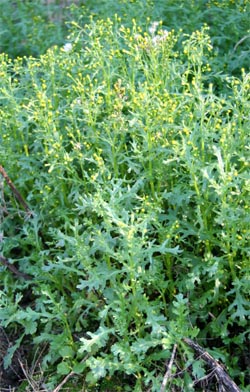
Common groundsel, Senecio vulgaris, is an annual weed in the daisy family (Asteraceae) native to Europe, North Africa and temperate Asia. It probably arrived in North America mixed with grain European settlers brought with them. The origin of the common name is a derivation of the Anglo-Saxon groundeswelge, meaning ‘ground swallower,’ referring to how rapidly the weed spreads. It is a fairly inconspicuous little plant that is easily overlooked. It tends to be locally common but is absent or uncommon in other areas. In milder climates it is a summer or winter annual (hardy to zone 6) but in our area it only survives during the growing season. It reproduces exclusively by seed and infestations are more common in cool, moist weather
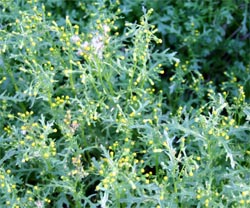
The plants grow upright, with a branched habit, up to 18″ tall, but often are shorter later in the season. The seedlings have long, narrow cotyledons with smooth margins but the true leaves are lobed. The leaves are alternate and the margins vary considerably from irregular coarse teeth to pinnately divided with irregular jagged lobes. It has hollow, slightly fleshy, often purplish stems (particularly at the base). It produces a shallow, taproot and a secondary fibrous root system.
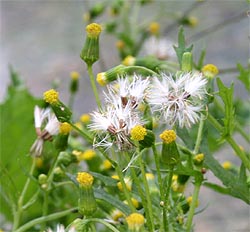
Common groundsel produces numerous yellow flowers in terminal clusters. The small flower heads (¼ to ½” long) look somewhat like a dandelion that never opens. Technically this is an involucre – the bracts envelope the composite heads of flowers in a series of narrow scales. The involucre is green with a black tip, and rayless (without “petals”) yellow flowers stick out the end of the cylindrical structure. Flowers are pollinated by insects and plants are self-fertile. The mature seeds have a fluffy white tuft of cottony material on one end (the pappus) that allows them to float in the air for long-distance wind dispersal.
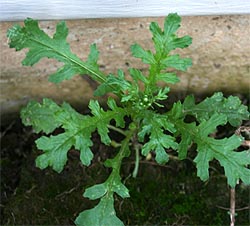
This weed is found in disturbed sites along roadsides, in waste areas, cracks in pavement or edges of walls, in cultivated fields and in sunny gardens, lawns and along edges of yards. It can also be a significant problem in nurseries. Fortunately, it is not especially invasive in undisturbed natural habitats. Although it prefers moist, loamy, fertile soils, it will grow in sandy soil or heavy clay and infertile soils but does not grow in shade. It has a very short life cycle and can grow from seed to mature seed-producing plant in as little as five weeks. Plants can be in bloom from early spring to late fall with individuals flowering for about 3-4 weeks. A single plant can produce a million other plants in a year if allow to produce seed.

Control common groundsel by hand pulling or shallow hoeing. Rototilling young plants is effective for larger areas. Even when the plant is pulled or cut off, seeds from open flowers can still mature and germinate, so it is best to eliminate plants before they flower. Do not compost any plants with flowers but remove them from the area. Since the seeds generally only remain viable for about a year, weeding plants out before they go to seed will have a dramatic impact on the size of the population the following year. But even if you remove all the weeds in your garden, you still may end up with some the next year from seeds that are blown in from nearby sites. A coarse mulch about 3″ thick will prevent seedlings from growing. In the home garden and landscape, common groundsel is best controlled using cultural and mechanical methods, but herbicides containing glyphosate can be used. They must be used very carefully as gyphosate will severely injure or kill any plant it touches. There are no preemergent herbicides available for home use that are effective for controlling this weed.
– Susan Mahr, University of Wisconsin – Madison
Latest from Wisconsin Yard & Garden
Ask Your Gardening Question
If you’re unable to find the information you need, please submit your gardening question here:





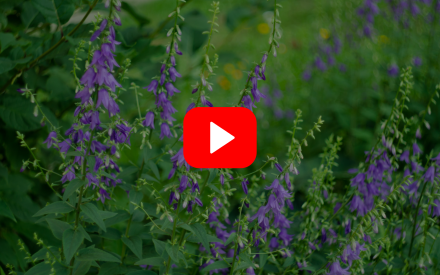 ▶ Watch: Biology and Management of Canada Thistle, Bishop's Goutweed, and Creeping Bellflower
▶ Watch: Biology and Management of Canada Thistle, Bishop's Goutweed, and Creeping Bellflower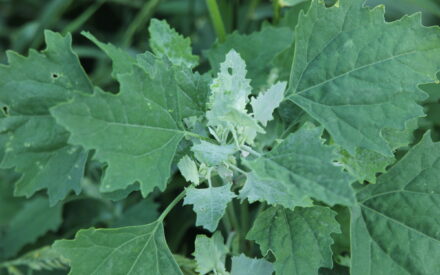 Common Weed Seedlings of the North Central States
Common Weed Seedlings of the North Central States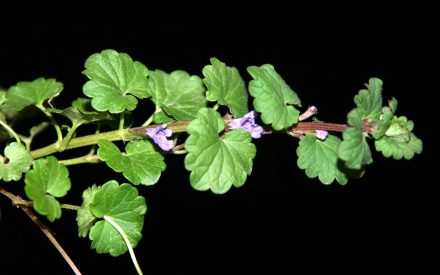 Creeping Charlie, Gleochoma hederaceae
Creeping Charlie, Gleochoma hederaceae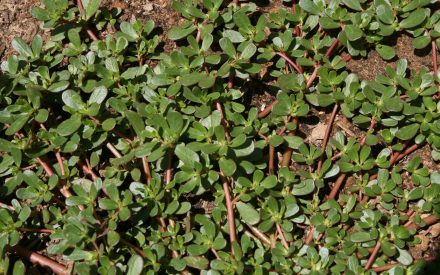 Common Purslane, Portulaca oleracea
Common Purslane, Portulaca oleracea


